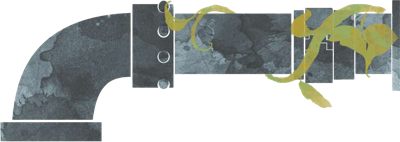

In East Oakland, residents face air pollution challenges related to emissions from truck traffic and nearby industrial facilities, illegal trash dumping, safe streets, affordable and healthy housing, healthy food access and good schools and jobs. Residents of East Oakland are about 40% African American and 44% Latino. Nearly half of the households in this neighborhood earn less than $30,000 per year, and 43% of residents over the age of 25 have not graduated from high school. In many households, Spanish is the primary language spoken. Overall, these environmental health stressors contribute to poor health outcomes in East Oakland.
One major source of emissions in East Oakland is AB&I Foundry, the second largest polluter in Alameda County. In 2015, AB&I emitted a total of 81,851 lbs. of dangerous chemical compounds including lead and mercury, which can have serious effects, especially on children. AB&I makes cast iron soil pipe and fittings, and other iron products, from scrap metal. The foundry is the largest producer of cast iron soil pipe and fitting in the West Coast. Its manufacturing facility is headquartered in East Oakland – the heart of the most industrialized area in Oakland. While it is adjacent to other industrial facilities, it neighbors a residential area that has several sensitive receptors. The neighborhood residents have expressed concern about AB&I operating close to their homes and children’s school. Residents have consistently smelled foul odors in the area and seen dust on their plants and their homes, and their children experience frequent asthma attacks. AB&I claims it implements social and environmental policies and practices.
CBE has worked with residents to channel their concerns about air pollution, as one stressor, to the Bay Area Air Quality Management District (BAAQMD). Capturing resident’s experiences with air pollution challenges can help the BAAQMD better manage and enforce air pollution controls on industry. Residents, in turn, must be able to identify strange air quality odors and describe it in a way that the BAAQMD can identify potential sources. CBE has identified a need for residents to digitally and instantly record air quality changes based on their experiences, in language that also translates to BAAQMD categories, and in multiple languages (English and Spanish). Students will learn about resident’s perception of air quality by studying CBE’s previous work logging air quality perceptions in East Oakland and interviewing residents of the community. They will then develop a mobile and web platform for residents to input their perceptions of air quality. Data uploaded through app will be open-access to analyze and go into a live map with locations and times. They will present the tool to CBE and community members, as well as participate in workshops and presentations between CBE and resident’s related to the air monitoring study.